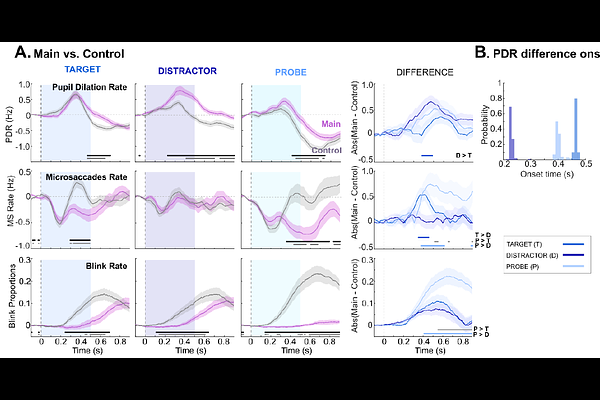Dissociable Pupil and Oculomotor Markers of Attention Allocation and Distractor Suppression during listening

Dissociable Pupil and Oculomotor Markers of Attention Allocation and Distractor Suppression during listening
Liu, X.; Chait, M.
AbstractEmerging evidence suggests that ocular dynamics, pupil dilation, eye movements, and blinks, can serve as markers of task engagement. In this study, we examined whether these measures dissociate different perceptual states during an auditory attention task. Participants (Main and Control experiments; N = 34 and 27, both sexes) listened to tone sequences designated as 'Target', 'Distractor', and 'Probe', designed to isolate active attention from suppression of irrelevant input. We focused on four physiological signals: pupil diameter (PD), pupil dilation rate (PDR), blink rate, and microsaccades (MS). Compared to a control condition, both Target and Probe intervals elicited sustained PD increases, blink suppression, and prolonged MS inhibition indicating extended attentional engagement. Interestingly, the Distractor interval also showed prolonged blink suppression and elevated PDR, suggesting active arousal to suppress irrelevant input. However, MS dynamics during Distractors were indistinguishable from control, implying that attention was not allocated to the distractors despite the heightened arousal. This dissociation supports the interpretation that MS is specifically modulated by attentional allocation, while PD and blinks also reflect general arousal or suppressive mechanisms. Overall, these findings reveal that PD, MS, and blinking capture distinct aspects of cognitive control. Together, they offer a multidimensional framework for studying selective attention and distractor suppression in complex tasks.